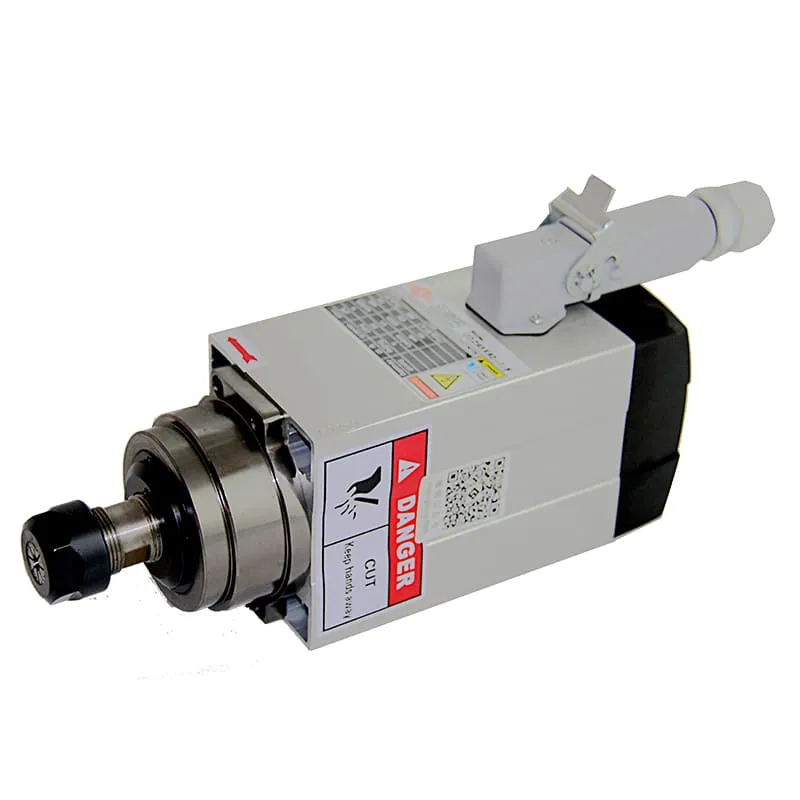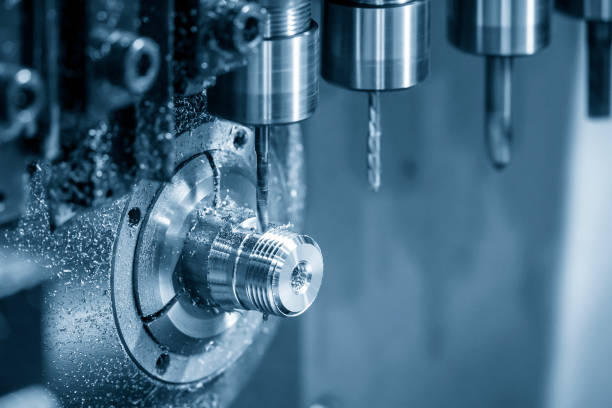Is CNC Easy to Learn?
The question, Is CNC easy to learn?, is one that has crossed the minds of many individuals interested in the manufacturing and machining industry. For beginners, the complexities of CNC machining and programming might seem intimidating, but the reality is more optimistic. Learning CNC can be straightforward, especially with the right guidance, tools, and commitment. In this comprehensive guide, we will explore what it takes to learn CNC, the skills required, and why it might be easier than you think. We’ll also look at how modern tools, such as software and CNC spindles, can simplify the learning process.
What Is CNC and Why Is It Important?
CNC, or Computer Numerical Control, is a technology used to control machine tools via computer programming. CNC machining plays a pivotal role in manufacturing today, enabling precision cutting, milling, turning, and drilling on a wide range of materials including metals, plastics, and wood.
The CNC machine takes commands from a CNC program—typically written in G-code—which controls the movement of the machine’s components. CNC is crucial in industries such as aerospace, automotive, and even in small-scale DIY manufacturing due to its capability to produce parts with high accuracy.
The good news is that, thanks to advancements in technology and user-friendly software, learning CNC is more accessible than ever before. From basic concepts to advanced CAM (Computer-Aided Manufacturing) software, there are resources that make learning CNC an achievable goal for everyone.
Explore our range of CNC spindle motors that enhance machining precision and reliability.
The Basics of Learning CNC
1. Understanding the Types of CNC Machines
Before diving into learning CNC, it is important to understand the different types of CNC machines. The most common types include CNC mills, CNC lathes, and CNC routers. Each of these machines serves a unique purpose in machining different types of parts.
- CNC Mills: These are used primarily for cutting and shaping parts in a variety of materials. They can move in multiple axes to carve complex geometries.
- CNC Lathes: These are best suited for parts that are symmetrical around an axis, such as shafts and cylindrical components.
- CNC Routers: Routers are generally used for woodworking but can also handle plastic and some soft metals.
Understanding the types of machines helps in choosing the right machine to learn and develop specific skills.
Find the right CNC spindle for your milling needs for achieving the best results.

2. CNC Programming Basics
CNC programming is the core of CNC machining. Programs are typically written in G-code, which tells the machine what moves to make, at what speed, and how deep to cut. Learning G-code is an essential part of understanding CNC, but it’s often easier than it seems.
- G-Code Commands: These commands are simple instructions like “G01” for linear movement or “M03” for starting the spindle. Each command has a specific function, making programming logical and easy to understand.
- CAM Software: The good news is that most modern CNC machines use CAM software to generate G-code automatically. You don’t need to write every command by hand, as the software translates your CAD model into G-code.
By focusing on learning the key commands and understanding the basics of the software, CNC programming can be easily mastered.
Tools to Help You Learn CNC Effectively
1. Online Courses and Tutorials
The internet is filled with helpful resources to learn CNC. From YouTube tutorials to paid courses on platforms like Udemy or Coursera, these resources cover everything from basic concepts to advanced CNC programming.
- Video Tutorials: For visual learners, watching someone else operate a CNC machine can be immensely helpful. Seeing the machine in action makes it easier to grasp concepts like tool changes and work offsets.
- Interactive Courses: Platforms like Coursera and edX offer interactive courses that walk you through the theoretical aspects as well as practical applications.
2. CAM Software Tools
Learning CNC programming is much easier with CAM tools like Fusion 360 or VCarve. These software solutions simplify the process by automatically generating the tool paths and G-code needed for machining.
- Simulation Features: One of the great features of modern CAM software is the ability to simulate machining. This allows you to visualize the entire process before ever running it on an actual machine, reducing the risk of costly errors.
- User-Friendly Interface: Modern CAM tools are designed to be intuitive, with drag-and-drop interfaces that make learning accessible even for beginners.
Consider our 2.2KW ER20 Air-Cooled Spindle for reliability during practice runs and learning sessions.

The Role of Practice in Learning CNC
1. Start with Simple Projects
One of the best ways to learn CNC is through hands-on practice. Start with simple projects like engraving names on a wooden piece or milling a small flat surface. These projects help in familiarizing yourself with the basic movements and functions of the machine.
- Engraving Projects: Engraving is an excellent way to get a feel for different feed rates and spindle speeds without risking large amounts of material.
- Pocketing and Drilling: These are common operations that are straightforward and help in understanding the machine’s response to different programming commands.
2. Gradually Increase Complexity
Once you are comfortable with basic projects, you can move on to more complex operations like 3D contouring or creating multiple parts in a single setup. Gradually increasing the difficulty of your projects will help you improve your CNC programming skills and build confidence.
- 3D Contouring: Moving from 2D cuts to 3D operations is a significant leap but an achievable one with proper guidance and practice.
- Multi-Tool Operations: Understanding how to manage tool changes and offsets adds another layer of complexity that is essential for more advanced machining.
Check out our 3.5KW ER25 Air-Cooled Spindle for handling more demanding materials as you progress in your learning.

Challenges You May Face and How to Overcome Them
1. Initial Complexity of G-Code
The biggest challenge that beginners face is the initial complexity of G-code. There are numerous commands to learn, and the sheer number of combinations can be overwhelming.
- Solution: Start by learning the most commonly used commands. Focus on the basic movements (G00, G01), spindle commands (M03, M05), and tool changes. Building a strong foundation with a handful of commands makes it easier to add more complexity later.
2. Tool Selection and Understanding Feeds and Speeds
Selecting the right tool and setting the appropriate feeds and speeds can be confusing for beginners. Incorrect feeds and speeds can lead to tool breakage or poor-quality parts.
- Solution: Use tools like online calculators or guidelines provided by the material and tool manufacturers. Practice by experimenting with different materials to understand how they react to various spindle speeds and feed rates.
Explore our selection of CNC spindles to help you understand tooling better.
How Long Does It Take to Learn CNC?
1. The Learning Curve
The time required to learn CNC depends on various factors, such as previous experience with machinery or programming. On average, a person with no background in machining can expect to take a few weeks to months to become comfortable with the basics of CNC programming and operation.
- Hands-On Practice: Spending time on actual CNC machines significantly reduces the learning curve. Most CNC learners can start executing basic projects within 2-4 weeks of consistent practice.
- Theoretical Knowledge: Understanding the theory behind tool paths, feeds and speeds, and G-code takes some time, but practice makes the theoretical concepts more intuitive.
2. Experience in Related Fields
If you already have experience in programming or manufacturing, the learning process can be faster. Understanding CAD or other design software also provides an advantage since creating 3D models is a big part of CNC work.
- Manufacturing Background: If you have experience working with manual machines like milling machines or lathes, you’ll find it easier to transition into CNC since you already understand the basic cutting principles.
Conclusion: Is CNC Easy to Learn?
The answer to whether CNC is easy to learn is a resounding yes—with the right approach and dedication. Learning CNC involves understanding machine types, basic G-code, and CAM software. Thanks to technological advancements and user-friendly tools, CNC is more accessible than ever. With online resources, practical projects, and the right set of CNC tools, anyone can learn CNC and even become proficient at it.
Invest in reliable equipment, such as our range of CNC spindle motors, which can make learning and executing projects smoother and more enjoyable.
FAQs
1. Is CNC programming hard to learn?
Learning CNC programming can seem challenging initially, but it becomes easier with practice. Focusing on basic G-code commands and using CAM software simplifies the process.
2. How long does it take to learn CNC?
It usually takes 2-4 weeks to learn the basics of CNC programming and operation, especially if you practice consistently and utilize hands-on learning.
3. Can I learn CNC machining online?
Yes, there are many online courses and tutorials available that cover everything from basic to advanced CNC programming. Platforms like Coursera and YouTube provide excellent resources.
4. What tools do I need to start learning CNC?
You need a CNC machine, CAM software, and a set of cutting tools. To get started, you can also use our 2.2KW ER20 Air-Cooled Spindle for reliable performance.
5. Is experience in manual machining helpful for learning CNC?
Yes, experience in manual machining can be extremely helpful because it gives you a foundational understanding of cutting forces, tool selection, and other machining basics.

